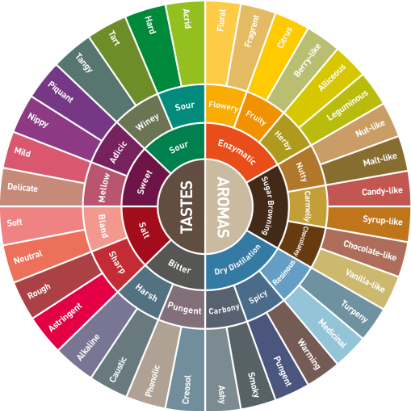11 Best Practices for Employee Engagement
Table of Contents
- 1. Track engagement
- 2. Create a strategy
- 3. Set the right expectations
- 4. Understanding what motivates employees
- 5. Lead by example
- 6. Establish feedback loops
- 7. Have the right management
- 8. Conduct interviews for stay and exit
- 9. Make engagement ongoing
- 10. Embrace diversity
- 11. Keep practicing
- Conclusion
A major driving force behind any organization's success is how employees feel about their job.
Engaged employees are far more productive, have higher retention, and often refer colleagues and friends, ultimately boosting hiring efforts.
Conversely, lacking engaged employees means people will depart for other opportunities or even drag down the team's overall productivity. Research has estimated that companies lose up to $550 billion in productivity yearly due to a failure to keep employees engaged.
Effective managers understand that improving employee engagement drives a competitive edge through superior outcomes for customers, increased productivity, and better retention. Given today's immense costs for top-notch talent and having to train new staff, the right employee engagement strategy is more critical than ever.
1. Track engagement

Taking steps to consistently measure and improve employee engagement helps identify what is working and areas in which an organization can do better. For instance, a survey with 12 questions developed by Gallup called Q12 was designed to measure levels of employee engagement.
These queries to improve employee engagement vary between general expectations, the way a company's mission helps make a job feel important, and whether an employee is encouraged regularly to develop in their role.
Regardless of the employee engagement strategy survey format, establishing key metrics to gauge employee engagement levels is very important as it helps you identify opportunities and strengths for professional development. Furthermore, it's essential to periodically return to the survey to tell whether efforts of engagement have the right effect.
2. Create a strategy

Employee engagement is a necessary strategy that requires you to act accordingly. Regular feedback, the creation of professional development plans on the individual level, consistent communication, surveys, and clearly defined expectations for progression are pillars of all employee engagement practices.
3. Set the right expectations

Many times, expectations aren't clearly laid out, so workers do not fully understand what they are doing, the reason they are doing something, and the level of impact they have.
Even leaders with the best intentions often feel as though these things do not have to be spelled out for proper employee engagement efforts.
However, if employees aren't taught on an explicit level, they won't deliver or achieve employee recognition.
This means that personnel needs to be trained on the basics instead of assuming they will figure things out on their own.
4. Understanding what motivates employees

Taking an employee engagement survey to understand what motivates them helps companies develop employee engagement strategies around their specific incentives.
For example, if someone is a level II engineer, they need to be informed when a position for level III engineering opens up such that if they meet their goals, they will be granted the ability to move up.
5. Lead by example

Executives comprehending the connection between employee engagement strategies and business success know what it means to set an example. If employees see that the leaders of an organization are not engaged, it will inevitably affect every department down to the lowest positions.
Following research conducted by Gallup, companies that report executives of high engagement also report superior employee engagement levels, particularly with those that have spent more than ten years of their lives with a company.
6. Establish feedback loops

When maintaining employee engagement, you need to implement regular feedback as part of constant communication. As a company, you also need to show that this feedback is taken very seriously in order to make a better workplace.
It helps to bring in a neutral, objective third party to help begin the process, as people are often more than willing to open up about their struggles with someone who exists outside the company.
7. Have the right management

Managers play the ultimate role in employee engagement. By having the right manager, a team will excel, and by having the wrong manager, the business will die from the inside out.
Every leader should be required to possess a series of competencies that extend beyond technicality, so these individuals should be carefully chosen and trained to reflect the correct company culture.
Only the best managers instinctively focus on employee engagement, to the point of always trying to re-hire the best workers. This demands paying constant attention to the three basic needs of workers: knowing them, focusing on them, and growing them.
8. Conduct interviews for stay and exit

The more you engage employees, the less likely they are to depart the company. Although the majority of organizations perform routine interviews after an exit, it's just as critical to provide stay interviews.
The reason for stay interviews is comparable to that of exit interviews, with the goal being to develop strategies for engagement and employee retention prior to having workers become dissatisfied and seek alternative opportunities.
These employee engagement program interviews are designed to take things a step deeper and truly comprehend the motivations of workers. This means understanding what is important to them in terms of their job, what would make them stay, and what would make them leave.
Go further by asking questions like what made them excited about starting, how their emotions changed over time, etc. This information should be an ongoing analysis from the start of the tenure.
9. Make engagement ongoing

Successful strategies for an employee engagement program are a constant effort. If you are adding a single meeting to the calendar year for this purpose, consider collecting generic feedback through employee engagement surveys every quarter to make employees feel as if their vote counts.
10. Embrace diversity

When building out a team of an engaged workforce with star employees, be conscious of those you are onboarding in addition to the expertise and skills they bring to the table. Although certain workplaces embrace specific personalities, the practice poses the risk of homogenizing a team and restricting innovation at the company level, which fails to increase employee engagement.
In the event that all your employees come from a similar background, the lack of diversity in experiences often hinders solutions. This is why teams need to go after candidates from groups that are typically underrepresented. By maximizing diversity, organizations acquire the advantage of the multiplicity of thought, leading to improved effectiveness.
11. Keep practicing

With consistency and practice, the development of the best employee engagement processes can and will become a critical part of your organization's culture and infrastructure. For companies that want to improve in this area, it's important to persist with different methodologies to develop highly engaged employees.
Research has proven that companies that invest in these initiatives will see important employee engagement over time. Don't force anything. Instead, learn that culture and the way employees feel will change over time, and engagement needs consistent attention to improve.
Conclusion
In order to foster the right culture of employee engagement best practices, human resources (HR) should play a critical role in creating an honest, transparent, and respectful evaluation with direct reports.
These reports should communicate corporate values and set expectations to support a proactive workplace that attracts and retains talent.
People leave managers and not companies. If professional HRs and executives want to hold management accountable, they need to make sure everyone has the tools necessary to do their jobs. Furthermore, managers should be periodically assigned to bigger, more exciting roles with the appropriate authority.
Employee engagement refers to the extent to which employees feel passionate about their work, are committed to their organization, and put in discretionary effort to help achieve its goals. Engaged employees tend to be more productive, provide better customer service, and are less likely to leave their jobs. Here are some best practices for improving employee engagement:
-
Communication: Communication is a critical element in engaging employees. It is essential to keep employees informed about organizational goals, progress, and any changes that may affect them. Managers should encourage open communication, listen to employees' feedback, and respond to their concerns.
-
Recognition and Rewards: Employees feel motivated when their contributions are recognized and rewarded. Organizations should establish programs that recognize and reward employees' efforts, such as employee of the month awards or performance-based incentives.
-
Professional Development: Employees want to learn and grow in their careers. Organizations should invest in training and development programs that help employees acquire new skills and advance their careers.
-
Work-life Balance: Achieving work-life balance is essential for employee engagement. Employers should provide flexible working arrangements, such as telecommuting or flexible schedules, to help employees manage their personal and professional lives.
-
Employee Well-being: Employee well-being is a critical component of employee engagement. Employers should promote a healthy workplace environment by offering wellness programs, health insurance, and mental health support.
-
Employee Involvement: When employees are involved in decision-making, they feel more engaged in their work. Organizations should seek employee feedback and involve employees in decision-making processes that affect their work.
-
Leadership: Effective leadership is crucial for employee engagement. Managers should lead by example, communicate effectively, provide regular feedback, and inspire their teams to achieve organizational goals.
In summary, improving employee engagement requires a holistic approach that considers communication, recognition and rewards, professional development, work-life balance, employee well-being, employee involvement, and leadership.
By implementing these best practices, organizations can create a work environment that fosters employee engagement, leading to increased productivity and employee retention.
Good Tasting Coffee: How to Identify Coffee Flavors

In order to appreciate the different types of coffee available, it's important to cultivate an awareness of its unique characteristics. Let's take a look at the way coffee connoisseurs judge different cups of coffee.

Aroma
The scent of a cup of coffee has a direct influence on how we perceive its flavor. As you drink coffee try to notice if the scent is smoky, fruity, earthy, spicy, nutty or grassy.
Acidity
One of the most defining characteristics of a cup of coffee is its acidity. This is the sharp, bright tangy quality of coffee that perks up our senses. Coffee doesn’t necessarily contain just one type of acid, either. It may contain citric acid, malic acid (fruity in flavor) or even quinic acid from stale coffee, which gives us stomach aches.
Body
This is the weight, thickness and texture of coffee in your mouth. The body of different types of coffee falls on a spectrum of light- to full-bodied viscosity (thin to thick).
Flavor
This is where comparisons come in handy and there is some overlap between aroma and flavor. Your coffee might taste bitter, sweet, savory or sour with common comparisons to chocolate, wine or fruit.
Related Posts

















